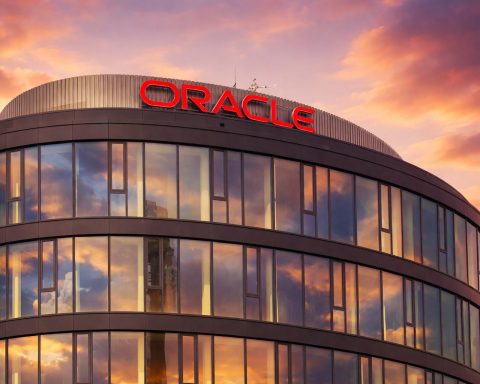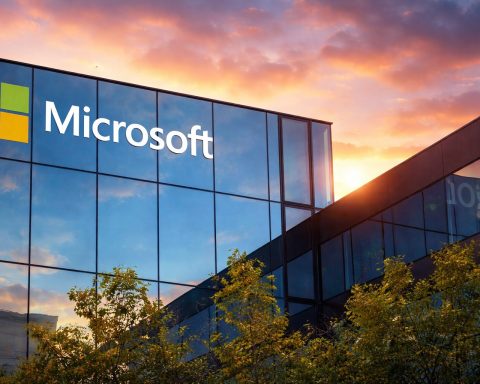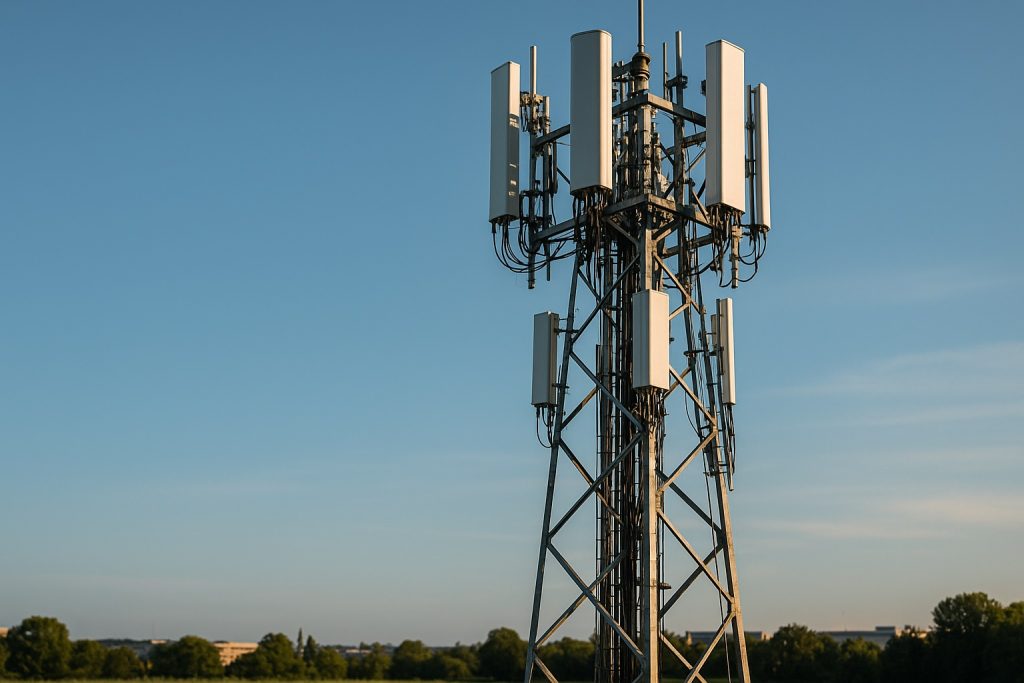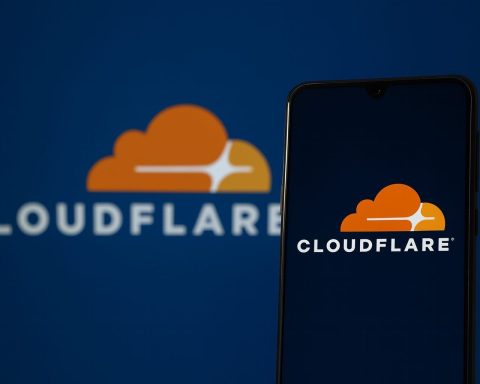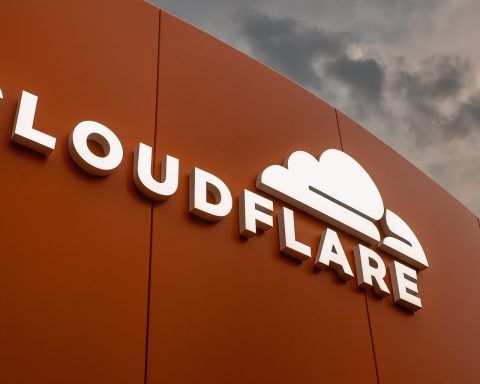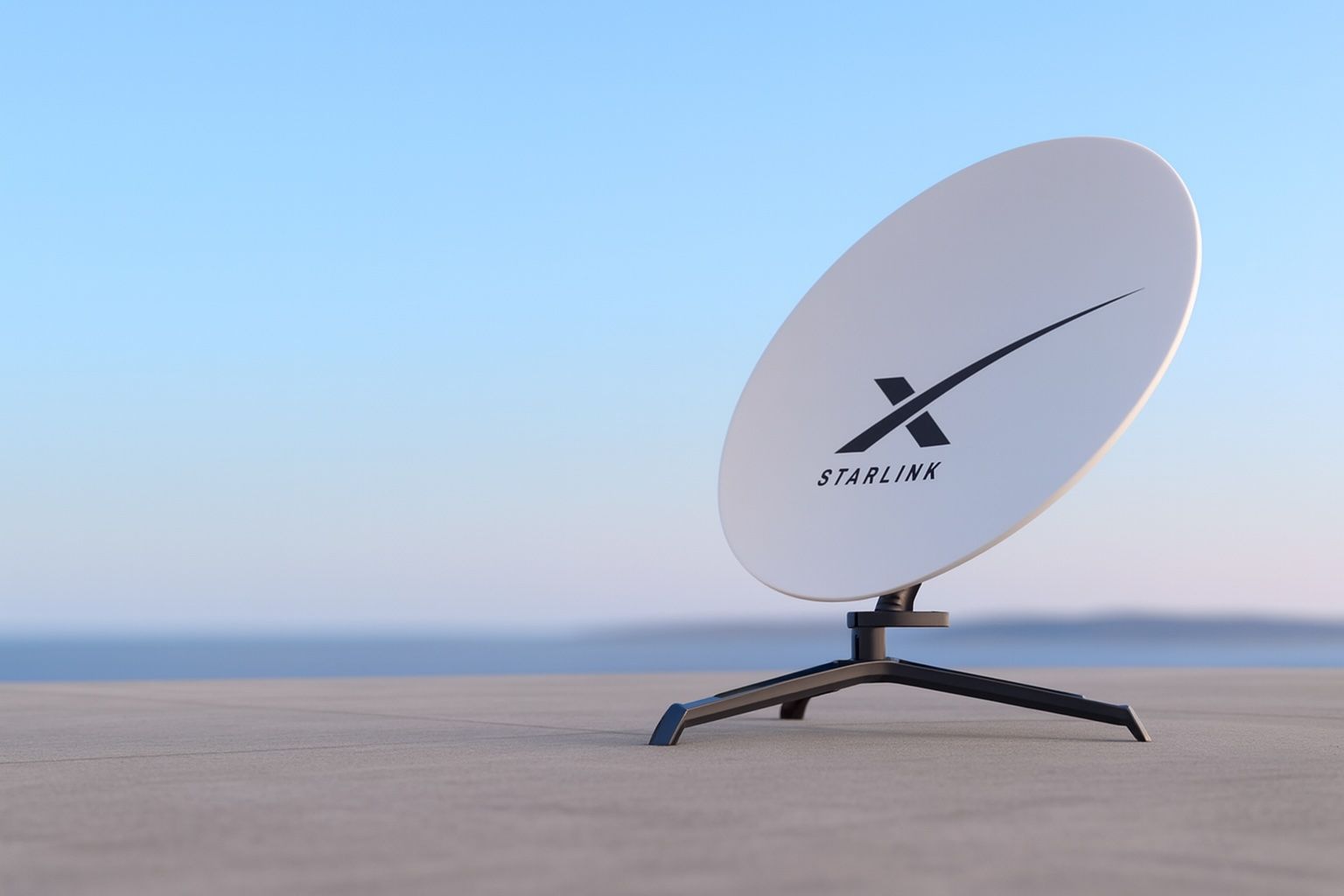- Over 50% of subscribers are already on fiber, with Telecom Italia San Marino planning to retire all copper DSL by 2027.
- San Marino achieved full nationwide 5G coverage by the end of 2018, making it Europe’s first country with nationwide 5G.
- The internet market is highly concentrated, with Telecom Italia San Marino (TISM) controlling about 93% of subscriptions and Telenet San Marino roughly 7%.
- In 2023, San Marino’s ICT Authority issued rules to allow new telecom entrants and fair use of the national fiber network to spur competition.
- Average fixed broadband speeds are around 95–100 Mbps, placing San Marino ahead of nearby Italy’s ~92 Mbps average.
- The median fixed speed is about 61–65 Mbps, reflecting a shift from ADSL to fiber among households.
- Gigabit fiber plans with 1 Gbps down are already offered by TIM San Marino as the network upgrades continue.
- Urban dwellers account for about 97.9% of residents, enabling near-universal coverage with fiber, VDSL, or strong wireless signals and no significant rural divide.
- Starlink and other satellite options exist as backups, with Starlink offering 50–200 Mbps down and 20–40 ms latency at about €90–€100 per month plus a few hundred euros for equipment.
- Approximately 85% of Sammarinese are online, with ~15% offline, and ongoing digital-literacy initiatives aim to raise usage toward near-universal adoption.
Robust Internet Infrastructure: Fiber, DSL, and 5G Coverage
San Marino’s compact territory has enabled nearly universal internet coverage. The country’s telecom network features widespread fiber-optic broadband alongside legacy DSL copper lines. Over 50% of subscribers are already on fiber, and the main provider has pledged to migrate entirely off copper by 2027 [1]. In practice, this means all households will use Fiber-to-the-Home (FTTH) or Fiber-to-the-Cabinet (FTTC) within two years [2]. Even today, broadband reaches virtually 100% of Sammarinese residents, thanks to past projects like “Project Socrate” that started cabling the whole territory ahead of its time. The mobile network is equally strong: 4G LTE service blankets the republic, and remarkably San Marino achieved full 5G coverage by the end of 2018 as part of an early pilot with Telecom Italia [3]. This made it Europe’s first country with nationwide 5G. The combination of advanced fiber and cutting-edge mobile infrastructure means residents enjoy modern, high-capacity internet access almost everywhere in the country.
Dominant Providers and a Unique Market Structure
San Marino’s internet market is tiny but highly concentrated. The former telecom monopoly, Telecom Italia San Marino (TISM) – a branch of Telecom Italia – still controls the lion’s share of services. In fact, TISM commands about 93% of the internet subscriptions, making it by far the dominant ISP [4]. The only significant competitor is Telenet San Marino, a smaller local ISP with roughly 7% market share [5]. Other providers exist (a few niche corporate networks and service resellers), but their impact is minimal. This near-monopoly yields a market that an international analysis rates as having “Very Poor” competitiveness [6]. Telefonia Mobile Sammarinese (TMS), the sole mobile operator (51% owned by Telecom Italia), similarly dominates mobile telephony and data [7] [8]. The upside of this structure is that the primary operator can roll out upgrades quickly across the entire nation. The downside is limited consumer choice and historically higher prices due to lack of competition. However, new regulatory steps are being taken to open the market – in 2023, San Marino’s ICT Authority issued rules to allow new telecom entrants and fair use of the national fiber network [9]. This is expected to spur competition and better offers for users. For now, though, Telecom Italia San Marino is the backbone of connectivity for nearly all citizens.
Fast Speeds: Average Broadband and Mobile Performance
Don’t let San Marino’s size fool you – its internet speeds are on par with, or even above, many larger countries. Thanks to extensive fiber and early 5G, users enjoy broadband speeds averaging around 95–100 Mbps download on fixed networks [10]. This places San Marino slightly ahead of neighboring Italy’s ~92 Mbps average [11]. Even the median fixed speed (around 61–65 Mbps) has been steadily rising as more households switch from ADSL to fiber [12] [13]. On the mobile side, performance is similarly strong. With 5G available everywhere, mobile data speeds often reach tens of Mbps up to 100+ Mbps under good conditions. Recent measurements show cellular download speeds averaging in the 60–65 Mbps range – remarkably, about equal to fixed broadband for many users [14]. (This is far above the European mobile average.) In short, Sammarinese consumers can stream 4K videos, video-conference, and use cloud services with ease on both wired and wireless connections. Latency is low too: the main ISP reports ping times ~20 ms on fiber [15], excellent for gaming or VoIP. The gigabit future is also on the horizon – gigabit fiber plans (1 Gbps down) are already offered by TIM San Marino [16], and as older lines are retired, such ultra-fast plans will become the norm.
Urban vs. Rural Access: Virtually No Digital Divide
One of San Marino’s advantages is its geography and demography – almost the entire population lives in contiguous “urban” areas. Over 97.9% of residents are classified as urban dwellers [17], given that the country is essentially one community across a small mountainous territory. This means there is no significant rural-urban gap in internet access. Broadband and 4G/5G coverage reach into every corner of the Republic, from the capital city San Marino and the historic town center on Monte Titano, down to smaller villages. Even remote homes on the slopes are covered by either fiber lines, VDSL cabinets, or strong wireless signals. The telecom providers have few logistical barriers to extending infrastructure, since the farthest customer is only a few kilometers from the next. As a result, coverage is nearly 100%, and people in the “rural” 2% of the population generally get service comparable to those in the city. The ongoing fiber rollout underscores this commitment: if any residence cannot be reached by fiber cable, TIM San Marino has promised alternative solutions at no extra cost (such as fixed wireless or special connectivity) so no one is left behind [18] [19]. This is a stark contrast to many countries where rural communities face slow connections. In San Marino, the digital divide by location is practically nonexistent, which is a huge boon for equal access to online services.
Government Policy and Digital Transformation Initiatives
The Sammarinese government actively promotes internet development as part of a broader digital transformation strategy. Recognizing that digital infrastructure is critical for economic growth, the authorities have launched several initiatives:
- Gigabit Society Goals: San Marino has aligned with European “Gigabit Society” targets, aiming for ubiquitous high-speed connectivity. The state’s utility company AASS invested in a nationwide fiber backbone – an almost unique project globally – to ensure all areas have fiber access [20]. This open-access fiber platform will allow multiple ISPs to offer next-gen services (business links up to 25 Gbps were cited as possible) by leveraging the AASS network [21]. Essentially, the government treated fiber broadband as a public infrastructure, accelerating its deployment.
- Regulatory Reforms: In 2019, San Marino established an independent ICT Authority to oversee telecom and ICT services [22]. Under its guidance, new regulations in 2023 opened the door for new telecom operators and set rules for spectrum allocation (especially 5G frequencies) [23] [24]. The goal is to increase competition and keep prices reasonable while maintaining high quality. These policies mark a shift from the historical single-operator model to a more competitive, innovative market.
- E-Government and Digital Services: The country has been upgrading its e-government platforms and cybersecurity readiness. San Marino scored 46.83 in a recent UN E-Government readiness index [25], and continues to improve digital public services. Projects range from online citizen portals to encouraging fintech and blockchain startups (San Marino passed a digital technologies law in 2024 to attract innovation [26]). The leadership envisions the Republic as a “Titano of innovation”, leveraging its small scale to quickly adopt new tech [27] [28].
- Digital Literacy and Inclusion: Alongside infrastructure, officials emphasize training and inclusion so that the ~15% of citizens still offline (mostly elderly) come online. Campaigns and perhaps subsidies are in place to raise internet usage from the current ~85% toward near-universal usage [29] [30].
Overall, San Marino’s government views the internet as a pillar of its future economy. By investing in infrastructure, reforming telecom policy, and fostering a tech-friendly ecosystem, they aim to turn the country’s small size into an advantage – making it a nimble “smart nation” where digital innovation can thrive.
Internet via Satellite: Starlink and Other Options
Given San Marino’s excellent terrestrial networks, satellite internet is more of a niche or backup service. Nonetheless, satellite connectivity is available in the country through international providers. For instance, SpaceX’s Starlink covers San Marino as part of its blanket coverage of Italy and Europe [31]. Residents can subscribe to Starlink’s service, which uses low-Earth orbit satellites to deliver broadband – offering download speeds roughly in the 50–200 Mbps range and latency around 20–40 ms, comparable to basic fiber service. The monthly cost for Starlink in the region is about €90–100, plus a one-time equipment fee of a few hundred euros (for the dish and router) [32]. This is relatively pricey, so Starlink in San Marino is mainly targeted at specialized users: e.g. remote hilltop farms (if any), businesses requiring redundant connections for resilience, or tech enthusiasts. Other satellite providers like Viasat or HughesNet (via the KA-SAT satellite) also technically cover San Marino, since they cover all of Italy. These offer broadband via satellite dish with speeds up to ~50 Mbps, though with higher latency (~600 ms) and data caps. However, given the country’s small size and nearly universal fiber/5G, satellite internet adoption is very low – there is simply little demand for it. It remains an option for backup connectivity or niche use cases (and for travelers with satellite phones or RV internet). In summary, satellite broadband exists but plays a marginal role in San Marino’s internet landscape, as ground-based networks more than meet the nation’s needs.
How San Marino Compares with Italy and Europe
Despite its tiny population, San Marino often punches above its weight in internet metrics – in part because being small makes it easier to deploy new tech quickly. Average fixed broadband speed in San Marino is about 96.8 Mbps, which edges out the Italian average of ~91.8 Mbps and also beats many EU countries [33] [34]. In global rankings (via Speedtest), San Marino’s fixed internet speeds rank roughly in the top 40–50% of countries, on par with places like Slovenia and Cyprus, and ahead of larger economies like Germany [35]. Mobile internet speeds are harder to compare due to limited data for San Marino, but with nationwide 5G, one can infer that mobile performance is similar to Italy’s. Italy’s median mobile download is around 57–58 Mbps [36], and San Marino likely achieves comparable if not higher figures (especially since TIM’s 5G network in San Marino has very high coverage and little congestion). In terms of internet usage, about 85% of Sammarinese are online, which is slightly below the European Union average (~90%) [37]. Italy’s internet penetration is about 90% [38], so San Marino is a bit behind in user uptake, possibly due to its older demographic. However, by households, internet access is virtually universal.
It’s also interesting to compare coverage and policy: Italy has vast rural areas where broadband rollout lags, whereas San Marino has essentially 100% high-speed coverage. Italy has multiple competing ISPs and mobile operators, whereas San Marino’s market until recently was a near-monopoly (though this is changing with new regulations). San Marino’s small size allowed it to be a testbed – for example, it leapfrogged Italy to deploy 5G first in 2018 [39]. On the other hand, Italy as an EU member can access EU funds (like the “Italy 1 Giga” plan investing €3.8B to bring gigabit broadband to underserved areas [40]), whereas San Marino must fund its own upgrades or partner with Telecom Italia. Overall, San Marino holds its own against its neighbors: its residents enjoy internet service that is as fast as (or faster than) those in Italy, with fewer geographic disparities. The country often serves as a micro-scale model of what advanced connectivity can look like – “small but mighty” in the digital realm.
Trends and Future Outlook: Toward a Fully Digital Nation
The trajectory of San Marino’s internet landscape is clearly upward. Demand for data continues to grow, with more streaming, remote work, and cloud services usage each year. The networks are evolving to keep pace. Key trends and expected developments include:
- Complete Fiber Migration: As noted, by 2027 Telecom Italia San Marino will retire all copper DSL lines, making fiber-optic the standard for every fixed connection [41] [42]. This will likely raise average speeds dramatically (into the several hundred Mbps range for most users) and improve reliability. The groundwork by AASS and TIM means even historic buildings and outlying homes will get fiber or equivalent ultra-broadband links.
- 5G Expansion and Innovation: Having achieved full 5G coverage early, the focus now is on leveraging 5G’s capabilities. This could mean deploying 5G Standalone networks (with ultra-low latency) and exploring use cases like IoT sensors citywide, smart traffic systems, or even 5G Fixed Wireless Access for any hard-to-wire spots. The ICT Authority is expediting 5G spectrum assignments to new operators too, ensuring that additional mobile providers (if they enter) can roll out services [43]. In the next few years, San Marino could serve as a test site for advanced 5G applications given its controlled size – for example, autonomous vehicle trials or smart factory wireless systems.
- Growing Internet Usage: The remaining offline population (around 5,000 people in 2024 [44]) is expected to shrink as digital literacy improves. The younger, fully connected generation is growing, and even older residents are coming online for e-health and communication. It’s feasible that internet penetration will close in on 95% by late-decade, approaching full adoption.
- Service Diversification and Competition: With new regulations, we might see additional ISPs or MVNOs (mobile virtual operators) launching, targeting niche offerings or better prices. The state’s support for startups could lead to local companies providing specialized internet services (for example, a San Marino cloud storage or local streaming platforms). At minimum, competition should drive prices down or speeds up for consumers, who until now had limited choice.
- Enhanced Resilience and Security: San Marino is also working on internet resilience and cybersecurity. The Internet Society’s “resilience score” for San Marino is 44%, a medium rating [45], and the country is improving international connectivity diversity (already deemed “Good” with multiple upstream links [46]). We can expect investments in backup routes, IPv6 adoption (currently under 1% of users, which is low [47] but likely to grow as networks upgrade), and security measures. The Global Cybersecurity Index gave San Marino a low score (~14 out of 100) [48], so authorities are keen on boosting cyber readiness as digital dependence grows.
In conclusion, San Marino’s small size has indeed become a big advantage in its internet journey. It can rapidly deploy new technologies nation-wide – from fiber-to-the-home to 5G – far quicker than larger countries, making high-speed connectivity available to all its citizens. While challenges like monopolistic market structure and late adopter population exist, the trends are very positive. San Marino is transforming into a fully digital society, leveraging modern infrastructure and forward-looking policies. For residents and businesses on Mount Titano, this means enjoying connectivity that rivals the world’s most developed nations – a remarkable feat for the world’s fifth-smallest country. In the digital age, San Marino shows that being small can mean being agile and highly connected [49] [50].
Sources: National and international reports and data, including Internet Society Pulse [51] [52], Telecom Italia San Marino press releases [53] [54], Speedtest Global Index [55] [56], DataReportal Digital 2024 [57] [58], and San Marino government/ICT Authority communications [59] [60].
References
1. sanmarinofixing.com, 2. sanmarinofixing.com, 3. en.wikipedia.org, 4. pulse.internetsociety.org, 5. pulse.internetsociety.org, 6. pulse.internetsociety.org, 7. en.wikipedia.org, 8. en.wikipedia.org, 9. www.sanmarinortv.sm, 10. en.wikipedia.org, 11. en.wikipedia.org, 12. datareportal.com, 13. pulse.internetsociety.org, 14. pulse.internetsociety.org, 15. www.speedgeo.net, 16. www.telecomitalia.sm, 17. datareportal.com, 18. sanmarinofixing.com, 19. sanmarinofixing.com, 20. www.sanmarinortv.sm, 21. www.sanmarinortv.sm, 22. www.esteri.sm, 23. www.sanmarinortv.sm, 24. www.sanmarinortv.sm, 25. pulse.internetsociety.org, 26. sanmarinofixing.com, 27. sanmarinofixing.com, 28. sanmarinofixing.com, 29. pulse.internetsociety.org, 30. datareportal.com, 31. stories.starlink.com, 32. ispreports.org, 33. en.wikipedia.org, 34. en.wikipedia.org, 35. en.wikipedia.org, 36. datareportal.com, 37. pulse.internetsociety.org, 38. datareportal.com, 39. www.gruppotim.it, 40. digital-strategy.ec.europa.eu, 41. sanmarinofixing.com, 42. sanmarinofixing.com, 43. www.sanmarinortv.sm, 44. datareportal.com, 45. pulse.internetsociety.org, 46. pulse.internetsociety.org, 47. pulse.internetsociety.org, 48. pulse.internetsociety.org, 49. www.gruppotim.it, 50. en.wikipedia.org, 51. pulse.internetsociety.org, 52. pulse.internetsociety.org, 53. sanmarinofixing.com, 54. sanmarinofixing.com, 55. en.wikipedia.org, 56. en.wikipedia.org, 57. datareportal.com, 58. datareportal.com, 59. www.sanmarinortv.sm, 60. www.sanmarinortv.sm

